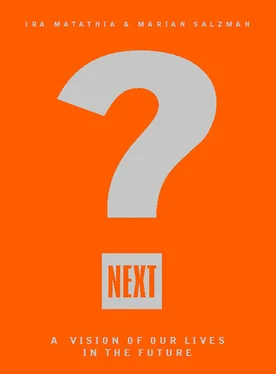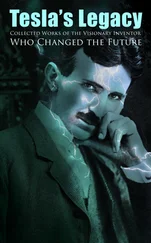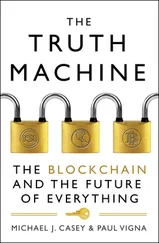When we consider brands for the future (a.k.a. millennium brands), it’s clear to us that, whether classic or newly minted, these brands will share a capacity to be reinvented, reinterpreted and reoriented at an extraordinary rate. Rather than be motivated by a chameleon-like hypocrisy, such change will be an extension of the brand’s guiding force. Authenticity is also all-important. Worn down by an endless barrage of questionable product claims and an unrelenting need to ‘read the fine print’, consumers gravitate towards – and actively seek out – people and products that deliver honesty and integrity.
The fact that Citibank sponsored Elton John’s 1998 world tour speaks worlds about that brand’s commitment to being what its customers need it to be: honest, human, humane and spirited. What more could a brand ask for than a celebrity endorser who has aired all and been lauded for his integrity, for his passion for his art and for the causes he’s supported and moved the world to support? When we consider Sir Elton John, we are really considering the quintessential millennium brand, an individual who has risen above his blemishes and warts, has been transported by his ambition, commitment and talent, and who remains firmly rooted in the real world while he lives a life far beyond anything a working-class kid from England could have ever imagined. Elton John is a millennial brand because he is trusted, because he is genuine – and because he is familiar. We know him, and we draw comfort from that.
Smart marketers have been quick to take advantage of consumers’ nostalgic leanings. Microsoft launched Windows 95 with help from the Rolling Stones; Nissan reconnected to its history with the aid of Van Halen and G.I. Joe. Around the world, we’re most definitely seeing a rise in ‘stake claiming’ to the past, as companies work to ensure that tomorrow is familiar because of its linkage to yesterday. Going forwards, we’ll see that the most effective marketing strategies meld the essence of nostalgia (reliability, quality, beauty, familiarity) with the positive elements of futurism (functionality, convenience, versatility).
Big Next: ‘Perpetual Youth’ and our Ageing World
It used to be that people over fifty were old, and people under thirty were young. Then Mick Jagger turned fifty and continued to strut his stuff on-stage, and our entire theory of ageing had to be revamped. Today, ‘midlife crises’ occur not on one’s thirty-fifth birthday, but on one’s forty-fifth, fifty-fifth or even later. Men and women in their seventies and eighties are remaining physically (even sexually) active, travelling the world, and are sometimes even involved in running companies – and countries.
Throughout much of Europe and North America, women are delaying childbirth until their thirties or even forties. Adults are running around in tennis shoes and short shorts, working out at the gym in an attempt to delay some of the normal ravages of ageing – and having plastic surgery to mask much of the rest. The fashion industry has been forced to redesign its ‘youth’ fashions to fit the bodies of the middle-aged men and women who continue to wear them rather than adopting more ‘grown-up’ fashions.
In the years ahead, expect the world’s ‘elders’ (whether ageing boomers or their parents) to command unprecedented attention from marketers and the media, and to have an enormous impact on the rest of the population. The reality is that we’re entering into an era in which the elderly will make up a larger proportion of the global population than ever before. Already, the most rapidly growing age group is made up of those aged eighty-five plus. In the US this group will double in size by 2025 and increase fivefold by 2050. Consider the implications: By the year 2030, approximately 20 per cent of the US population will be over age sixty-five. That’s 69 million people. Around the world, half of all people aged sixty-five and over who have ever lived are alive today.
Our ageing population promises to influence everything from financial planning and home design to the way products are made and sold. Likely developments include everything from ‘adult friendly’ caps on medicine bottles to wider car doors and foods that compensate for changing tastes and dietary needs. We’ll also see even greater shifts with regard to our attitudes regarding what it means to ‘age’. As the number of elderly continues to increase, so will this group’s power in terms of influencing public policy. Images of the elderly as victims will become historical; instead we will see seniors who grow more active in politics and who maintain and even increase their economic power as they move fully into their second half century of life. Socially, politically – and certainly economically – the implications of this ‘Big Next’ will be felt by us all.
We’ve chosen to place our final two Big Nexts – the United States of Europe and an Independent Asia – in a separate chapter. These Big Nexts differ from our usual ‘stock in trade’ in that they focus on geopolitics and regional economics rather than on consumerism, popular culture and the like. Whether one lives in one of the regions in question or in the Americas, Africa or elsewhere, the implications of life next in Europe and Asia will be enormous.
Конец ознакомительного фрагмента.
Текст предоставлен ООО «ЛитРес».
Прочитайте эту книгу целиком, купив полную легальную версию на ЛитРес.
Безопасно оплатить книгу можно банковской картой Visa, MasterCard, Maestro, со счета мобильного телефона, с платежного терминала, в салоне МТС или Связной, через PayPal, WebMoney, Яндекс.Деньги, QIWI Кошелек, бонусными картами или другим удобным Вам способом.












